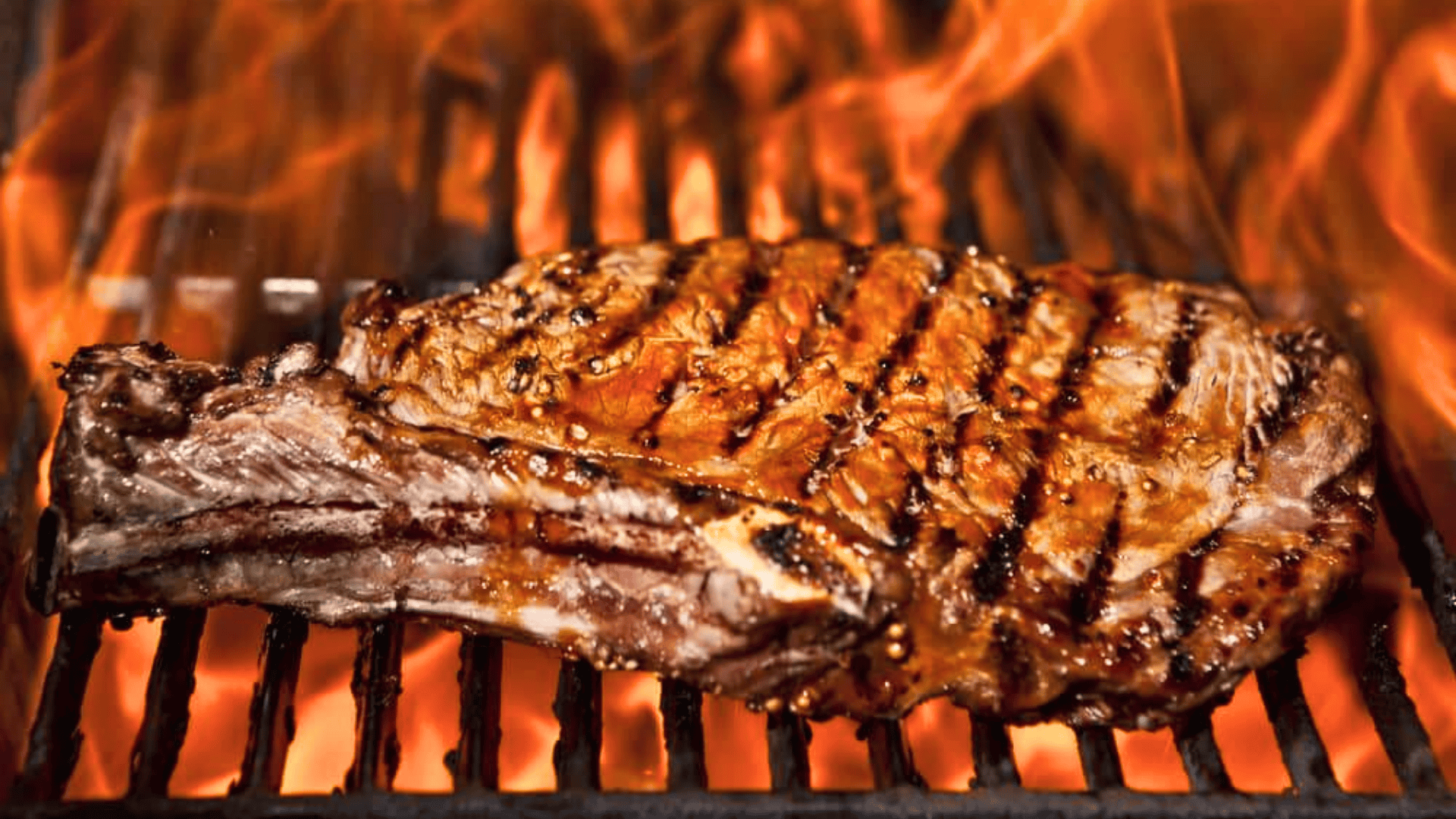I know how easy it is to crave a good steak when you want something hearty, but I also get that you’re trying to balance flavor with health. That’s why I want to walk you through sirloin steak nutrition in a way that makes sense for your goals.
If you’re counting calories, watching fat, or making sure you get enough protein, sirloin can be a reliable choice.
I’ll show you the breakdown of nutrients and how they benefit your body.
You’ll also see how it stacks up against other cuts and how cooking plays a role. By the end, you’ll feel confident about where sirloin fits in your diet.
Sirloin Steak Nutrition Facts (per 3 Oz Cooked Serving)
When people talk about the nutritional value of sirloin, they usually reference a standard serving of three ounces. This is about the size of a deck of cards and a useful portion for anyone watching their intake. A 3-ounce cooked sirloin steak contains:
| Nutrient | Amount (Per 3 oz Cooked Serving) | % Daily Value (Approx.) |
|---|---|---|
| Calories | 175–207 kcal | — |
| Protein | 23–25 g | — |
| Total Fat | 7–12 g | — |
| Saturated Fat | 3–4.6 g | — |
| Cholesterol | 74–75 mg | 25% |
| Sodium | 50–55 mg | 2% |
| Iron | ~2 mg | 12% |
| Vitamin B12 | — | 100%+ |
| Zinc | — | 40–47% |
| Potassium | 285–310 mg | 6% |
This portion size delivers a strong balance of nutrients: high-quality protein for muscle support, essential minerals like iron and zinc for energy and immunity, and vitamin B12 for nerve and red blood cell health.
With moderate fat and no carbohydrates, sirloin steak is considered one of the leaner cuts, making it a versatile choice for both weight management and high-protein diets.
Why Sirloin Stands Out Compared to Other Steaks?

One of the most appealing aspects of sirloin steak is its protein content. Each 3-ounce portion delivers roughly 23 grams of protein, which makes up nearly half of the daily needs for many adults.
What sets beef protein apart is its completeness. Unlike plant proteins that may lack one or more essential amino acids, beef contains all nine in balanced amounts. These amino acids are critical for muscle repair, hormone regulation, and maintaining energy levels throughout the day.
For athletes, weightlifters, or anyone focusing on strength training, sirloin steak provides an efficient and filling way to meet protein goals. Even outside of fitness, its slow-digesting protein helps extend satiety, making it easier to manage appetite and avoid unnecessary snacking between meals.
Fat and Cholesterol Content: The Lean Advantage
Sirloin is a leaner cut of beef, with 7–12 g of fat per serving, including 3–5 g of saturated fat. Unlike fattier cuts such as ribeye, which can reach 20 g of fat, sirloin provides a better balance.
It also contains monounsaturated fats, the same heart-friendly type found in olive oil. When trimmed and cooked with methods like grilling or broiling, sirloin offers flavor while supporting a heart-conscious diet.
Key Micronutrients in Sirloin Steak
Protein and fat tend to steal the spotlight, but sirloin steak’s micronutrient content is just as impressive. Some of the most important nutrients include:
- Iron: Critical for oxygen transport in the blood. Sirloin provides heme iron, which is more easily absorbed than plant-based iron.
- Zinc: Plays a role in immune defense, wound healing, and hormone regulation. Just one serving of sirloin delivers nearly half the daily requirement.
- Vitamin B12: Essential for red blood cell production and nerve function. A serving of sirloin easily covers daily B12 needs.
- Phosphorus: Supports bone health and energy metabolism.
- Potassium: Helps regulate fluid balance and supports proper muscle contraction.
- Magnesium: Important for muscle and nerve function, as well as bone structure.
One added advantage of these nutrients in beef is their bioavailability. Your body absorbs them more efficiently than from plant sources, which can be significant for individuals with higher nutrient needs or those prone to deficiencies.
Sirloin Steak: Health Benefits and Dietary Fit
| Dietary Approach | How Sirloin Fits |
|---|---|
| Keto & Low-Carb | Virtually no carbs, high in protein and fat, making it keto-friendly. |
| Weight Management | High protein reduces hunger hormones and boosts satiety, helping control appetite. |
| Heart Health | Leaner than many cuts; lower saturated fat supports heart-conscious eating when prepared smartly. |
| Balanced Eating | Works well with vegetables, whole grains, and healthy fats for a nutrient-rich meal. |
Note: Portion control is key. Despite being leaner, sirloin is still red meat, and most health experts suggest limiting red meat to a few servings per week for long-term cardiovascular health.
Cooking Methods That Maximize Nutrition

The nutrition of sirloin steak isn’t just determined by the cut; it also depends on how it’s cooked. Certain methods preserve nutrients and keep fat levels in check, while others can add unnecessary calories. Here are some methods in question:
- Grilling and Broiling: Both allow fat to drip away from the meat, lowering total fat content. These methods also impart flavor without requiring extra oil.
- Pan-Searing: Effective for flavor, especially when using minimal oil or a nonstick pan.
- Medium-Rare Cooking: Retains more B vitamins and moisture compared to well-done steaks, which lose more nutrients through longer cooking times.
- Smart Seasoning: Using herbs, garlic, pepper, or citrus enhances flavor without adding excess sodium. Avoid heavy butter-based sauces or marinades that are high in sugar and salt.
By choosing lighter cooking methods and thoughtful seasoning, you maintain the nutritional value while still enjoying a flavorful steak.
Final Thoughts
I like that sirloin can give you plenty of protein and nutrients without going overboard on fat or calories. It’s one of those cuts that works when you want flavor but also care about balance.
By now, you’ve seen how sirloin steak nutrition covers protein, minerals, and healthy fats in a way that supports muscle, energy, and overall wellness. It’s also easier to fit into your meals compared with fattier cuts, especially if you’re mindful of portions and how you cook it.
If you’re ready to keep learning about food choices that support your goals, check out more of my posts. You’ll find simple, practical ideas that help make everyday eating healthier and more satisfying!





